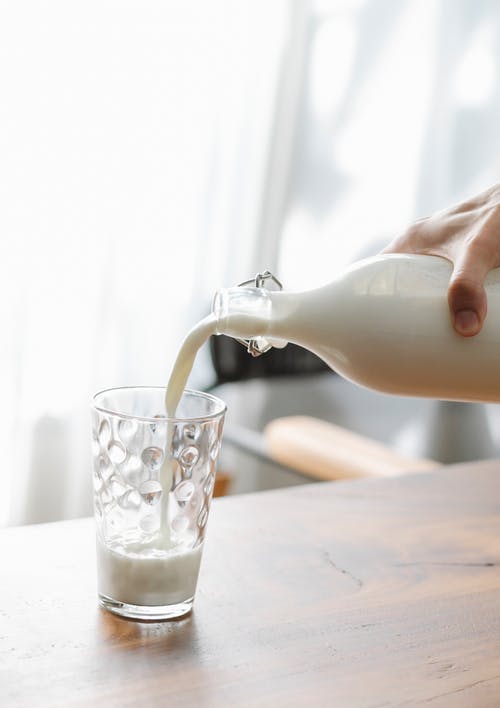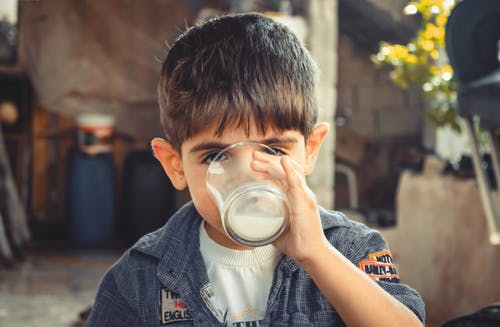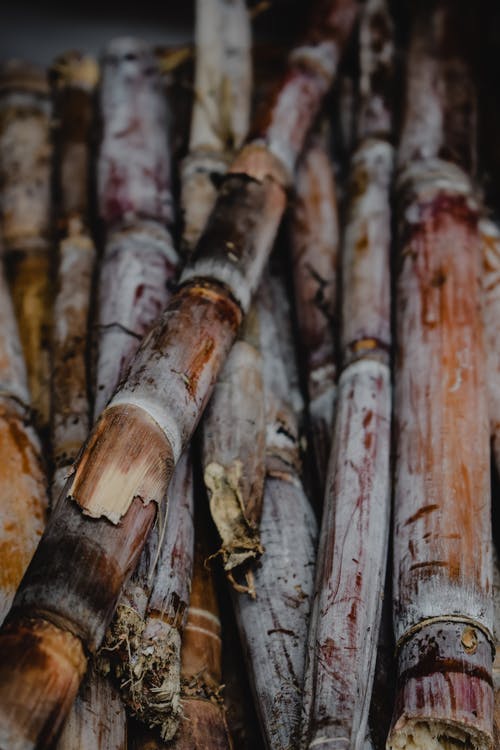There is a single word in English – milk. But milk has many synonyms in Sanskrit. And these synonyms define different qualities of milk. Interestingly, since these synonyms have a unique individual meaning, they are also used for many other substances. That’s what makes gives an unimaginable depth to Sanskrit literature.
This blog is a part of the explanatory series of the following shloka from Charak Samhita.
षष्टिकाञ्छालिमुद्गांश्च सैंन्धवामलके यवान् ।
आन्तरीक्षं पयः सर्पिर्जांगलं मधु चाभ्यसेत्।।
Charak Samhita Sutra Sthana (5th Chapter – 12)
In the case of Charak Samhita, Acharya Charak advocates the use of “paya” every day. One of the meanings of paya is milk. However, there is another meaning.

Read our popular article – The best drinking water in Ayurveda – space water
Meaning of word “paya”
पय r. १st cl. (पयते) To go, to move.
secretion
Payas
It denotes the ‘milk’ of the cow in the Rigveda१ and later.२ More generally it has also the sense of ‘sap’ or ‘fluid’ found in plants,३ and giving them life and strength. In other passages, it denotes the ‘water’ of heaven.४ A vow to live for a time on milk alone occurs in the Śatapatha brāhmaṇa.५
So, I believe that Acharya Charak used this word with a lot of wisdom. Because it refers to both the milk from the animals and the plant sap.
On the other hand, had he meant only the dairy milk, Acharya Charak could have referred to another Sanskrit word called – dugdha
दुग्ध
यस्याः दोहनं जातम् ।
The word dugdha emerges from a Sanskrit root “duh” and it refers to anything that is milked. Normally, the process of milking happens in the case of animals. However, one can also milk a rubber tree. So, even the word dugdha does not indicate exclusive use of dairy products.
The bottom line is that milk and milk-based products are considered to be like elixir Ayurveda. And it was conveniently true for many centuries when the cattle were free. They were not locked in a suffocating environment and fed unnatural feed.
But, today, we need to review the convention translation of the Ayurvedic text and look deeper to find a new meaning, a meaning more practical and eco-friendly.
And these shloka contains that meaning which is eternally applicable.
My new translation for this shloka is that paya or the plant sap should be consumed every day, instead of polluted dairy products.

What is paya?
According to its etymology, the word paya refers to any sap, it can be derived from plants or animals (milk).
Therefore, paya is both for dairy consumers and vegans.
Dairy milk is an example of animal paya. However, most of us are not aware of the plant sap that can be conveniently used for human consumption.
- Sugarcane sap
This is the most commonly used sap.
However, Acharya Charak recommends the use of sap every day and no refined sugar.
Sugarcane Sap
The sugarcane sap contains multiple other nutrients than just sugar. It also provides a cooling effect on the body.
Sugarcane juice helps to flush away the metabolic toxins from the digestive tract. It is also a great detoxifying agent for the urinary system.
A person who consumes sugarcane sap frequently will never suffer from any kind of urinary or blood disorder.
On the contrary, daily use of sugar is scientifically proven to be highly detrimental to our health.
Sugar content in the sugarcane juice is diluted. But the regular crystallized sugar brings about a great sugar tsunami in the body. Frequent high sugar levels in the body can induce several serious disorders like diabetes and even cancer.
A highly popular festival in India
Chatt retains the memory of sugarcane juice benefits. Most of the Indian festivals are tailored to the modern lifestyle and therefore, they have lost the health rituals ingrained in them.
However, Chatt is observed with strict rituals. And one of the most interesting health rituals is the exclusive use of sugarcane juice for cooking a specific recipe -kheer. In this ritual, you cannot use sugar, jaggery, or any other kind of sweetening agent. What is a stand-alone ritual today, was the norm of the day earlier. People use sugarcane juice for cooking and it was preserved for the rest of the year in the form of sugar/jaggery. But the most recommended form of sugar usage is sugarcane juice!
Plant Sap
This is one of the multiple examples of plant sap that we can use every day.
There are multiple examples of plant sap.
The most prominent example is – Fruit Juices (esp. the coconut juice).
Another example is the sap derived from the plant stem. For example, the white milk of Indian Madder is poisonous. But it has great medicinal use in Ayurveda.

The sap is not alcohol
Most of the plant-based or animals based saps ferment to produce multiple food products.
For example, you can make alcohol from sugarcane juice, or grape juice. Milk is fermented to produce yogurt, buttermilk, etc.
But, fermented products are not the extension of the mother sap. They have different health properties. The word “paya” essentially refers exclusively to the fresh secretion of plants or animals.
By emphasizing the use of sap, Acharya Charak also ensures that we have enough fluid intake.
Plant Sap is Good Karma
I have mentioned the importance of karma in Ayurveda. Ayurveda essentially emerges as a tool to enable long and healthy life, devoted to the aim of salvation. However, any evil deed increases our karmic bondage.
Therefore, intention is the key factor to decide the best food. Conveniently ignoring the wrong is as good as intentionally doing it.
I am not against the consumption of animal products like dairy or honey. However, I don’t consume any of these as I sincerely believe that we can be healthy without them. In fact, we will escape the high dosage of chemicals, hormones, and antibiotics given to these animals, whether it is the chicken or the honey bees. Besides, it will be good for all living creatures and the environment if we stop consuming animal products.
I hope that this information brings good health to everyone. Thanks for reading!
